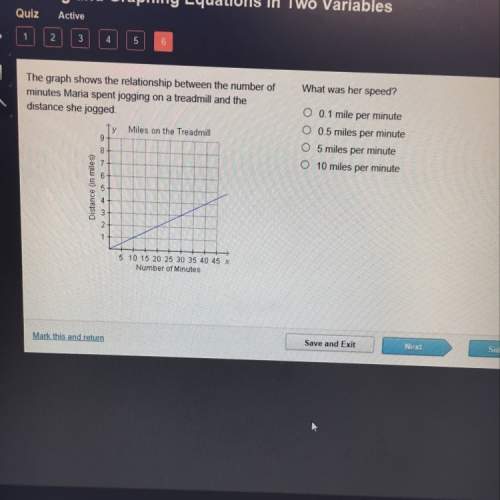
Mathematics, 08.04.2020 16:00, robbinsjeffrey271
Organisms A and B start out with the same population size. Organism A's population doubles every day. After 5 days, the population stops growing and a virus cuts it in half every day for 3 days. Organism B's population grows at the same rate but is not infected with the virus. After 8 days, how much larger is organism B's population than organism A's population? Answer the questions to find out. 1. By what factor does organism A's population grow in the first five days? Express your answer as an exponential expression.

Answers: 3
Other questions on the subject: Mathematics

Mathematics, 21.06.2019 13:00, vanleervanleer
Look at this expression. a3b3c a-3b-3c-1 which of the following is the simplest form of the expression above?
Answers: 2


Mathematics, 21.06.2019 23:00, Lizethh1
Acaterer knows he will need 60, 50, 80, 40 and 50 dinner napkins on five successive evenings. he can purchase new napkins initially at 25 cents each, after which he can have dirty napkins laundered by a fast one-day laundry service (i. e., dirty napkins given at the end of the day will be ready for use the following day) at 15 cents each, or by a slow two-day service at 8 cents each or both. the caterer wants to know how many napkins he should purchase initially and how many dirty napkins should be laundered by fast and slow service on each of the days in order to minimize his total costs. formulate the caterer’s problem as a linear program as follows (you must state any assumptions you make): a. define all variables clearly. how many are there? b. write out the constraints that must be satisfied, briefly explaining each. (do not simplify.) write out the objective function to be minimized. (do not simplify.)
Answers: 1
Do you know the correct answer?
Organisms A and B start out with the same population size. Organism A's population doubles every day...
Questions in other subjects:

Mathematics, 25.07.2019 06:30

Mathematics, 25.07.2019 06:30



Mathematics, 25.07.2019 06:30




Mathematics, 25.07.2019 06:30








